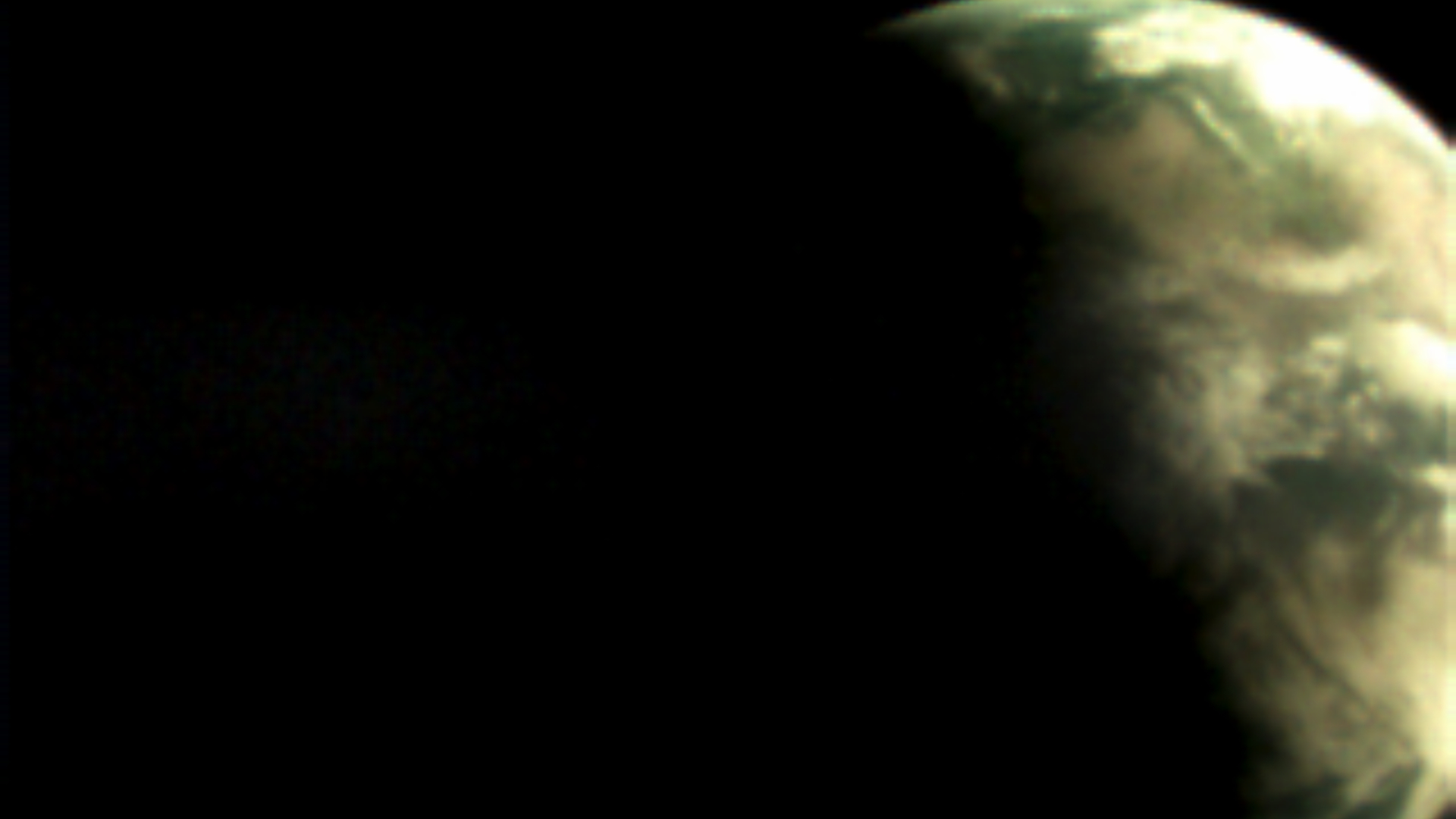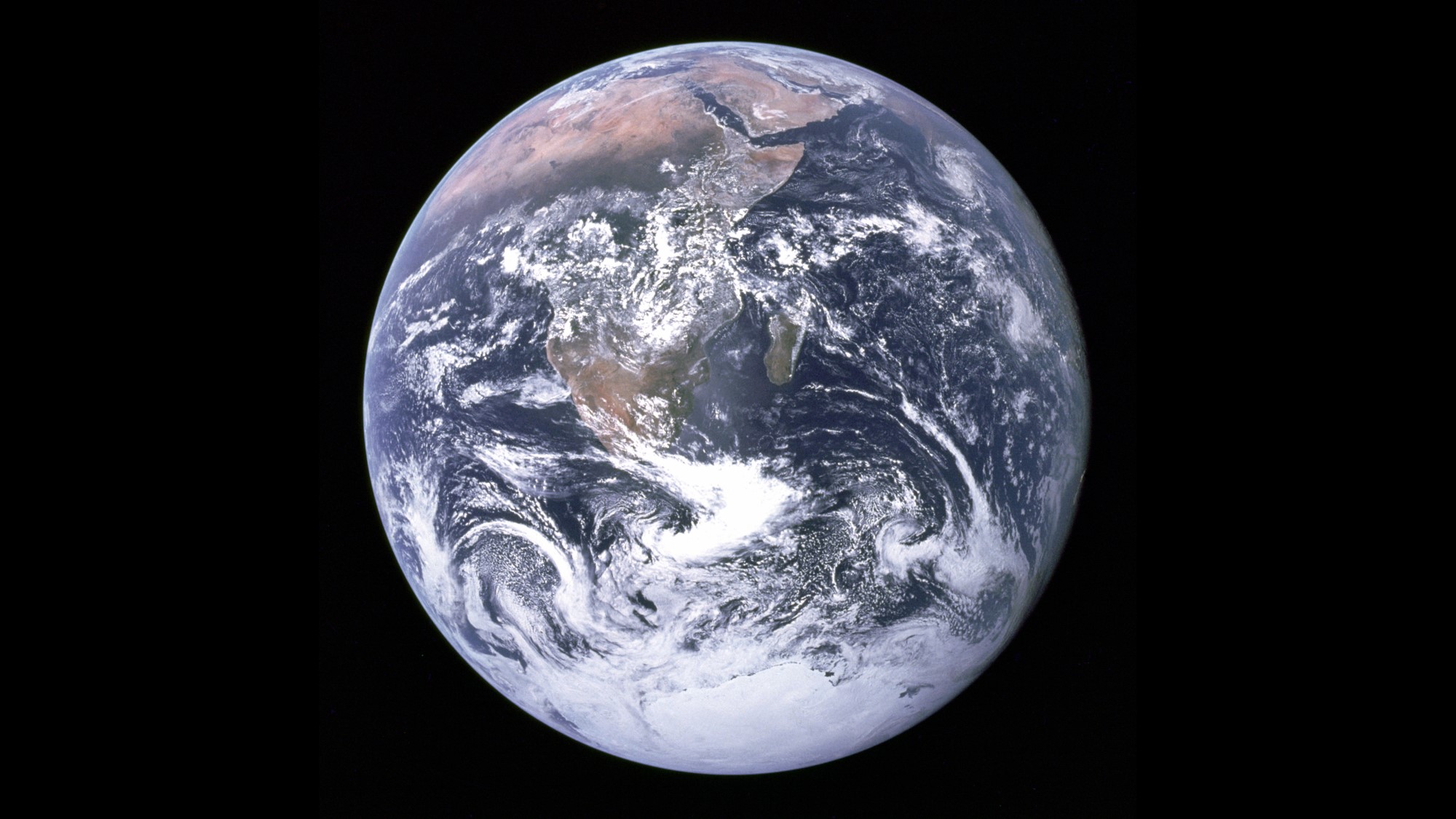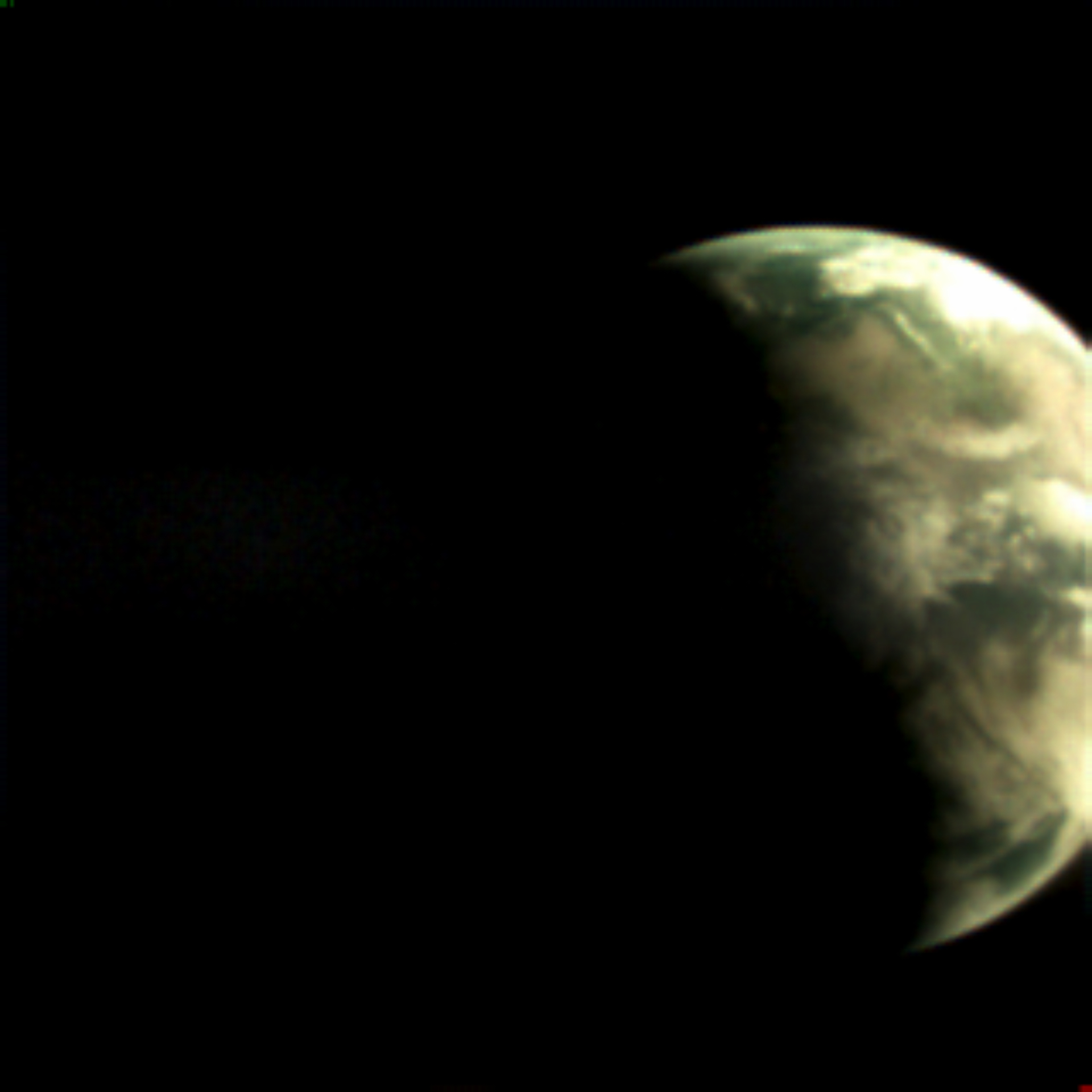
In a time when humanity has the means to procure almost unnaturally crisp images of the cosmos — from high-definition planetary portraits to massive deep space mosaics — there is something about the European Space Agency's new view of Earth that really gets me. It's blurry, the colors look kind of wrong, the planet isn't centered, half of the whole thing is shadowed, and honestly, it appears as though someone from the early 2000's took it with a flip phone.
Part of the allure is of course the fact that this image, according to ESA, was captured with a camera about the size of a coin's edge aboard a satellite made of three also-very-miniature boxes. The satellite is called TRISAT-R, and as the mission's project manager Iztok Kramberger said in the image's announcement, "this tiny camera measuring less than two cubic millimeters in size took a picture of an object measuring approximately one trillion cubic kilometers — our beautiful planet Earth — from thousands of kilometers away."
But beyond that, on a personal level, I think staring at this image makes our planet feel somehow more… real? It feels like a reminder that we literally exist on an object floating out there in the universe — a tangible orb in the tangible fabric of space-time that we can take a picture of. Not only does this frame highlight how our species has reached a point where a camera, smaller than a fingernail, can fly 6,000 kilometers (3,728 miles) upward and snap a visual of our entire world, but it also makes clear that this is, in fact, a picture. By contrast, the James Webb Space Telescope's infrared complexities add a layer of distance between us and the galaxies it images; the sharpness of Apollo 17's "Blue Marble" Earth portrait is incredible, but can make the scene feel a bit surreal.
On my own camera roll, I have hundreds of randomly blurry pictures in between those fit for an Instagram post. If, somehow, I could go to space and take a bunch of iPhone pictures of Earth, one of them would surely look something like this.
Related: These are the most detailed images of the moon ever taken on Earth
"If, somehow, I could go to space and take a bunch of iPhone pictures of Earth, one of them would surely look something like this."
If you're wondering why TRISAT-R took this image in the first place, the satellite, which is Slovenia's second such mission, flew out to medium-Earth orbit in 2022, bringing along some radiation-detection payloads and imaging devices. Basically, TRISAT-R's purpose is to help scientists study what goes on in parts of Earth's atmosphere called the Van Allen Radiation Belts.
The Van Allen Radiation Belts are zones in our planet's outer shell that host lots of charged particles — NASA compares them to "enormous donuts." The outer belt holds particles originating from the sun, while the inner belt tends to have particles resulting from what are known as cosmic rays, which zoom through space at nearly the speed of light. TRISAT-R's trajectory, ESA says, will take it right through the inner belt as well as through the heart of Earth's ionosphere, the boundary between our planet's atmosphere and the expanse of space. There are lots of charged particles around there, too.


And in addition to those radiation-detection payloads that'll study these supercharged regions around Earth, scientists armed TRISAT-R with, yes, cameras. Alongside the satellite, the TRISAT-R team sent up super small cameras made with clear borosilicate glass lenses (a highly durable form of glass) mounted directly onto 320x320 pixel image sensors, according to the statement. That's where we get our wonderfully faulted view.
"The resulting picture of Earth is very low resolution as these highly miniaturized cameras were not intended to perform terrestrial imaging," Kramberger said. Plus, the researcher continued, the satellite employs rather weak "magnetorquers" that push against Earth's magnetic field for its attitude control, so precision pointing is difficult to achieve.
Kramberger explains that the team's main interest with regard to imagery was to capture examples of the so-called "Black Sun effect." This effect basically happens when over-saturation of pixels in an image can cause very bright areas to appear dark.
"We have succeeded in these investigations, but have also been lucky enough to acquire images like these."
Quite lucky indeed.







